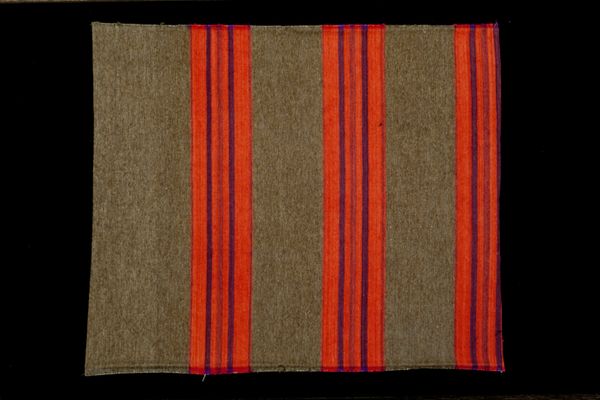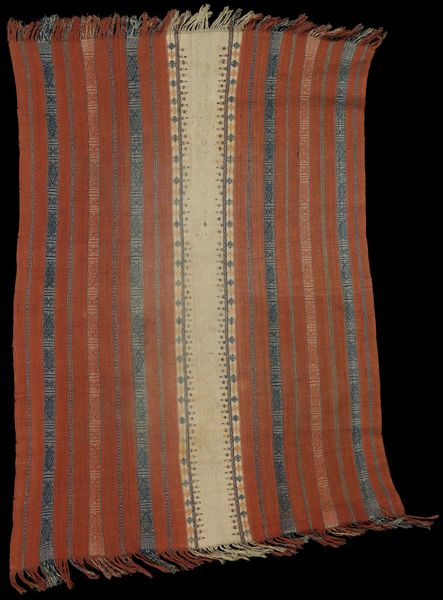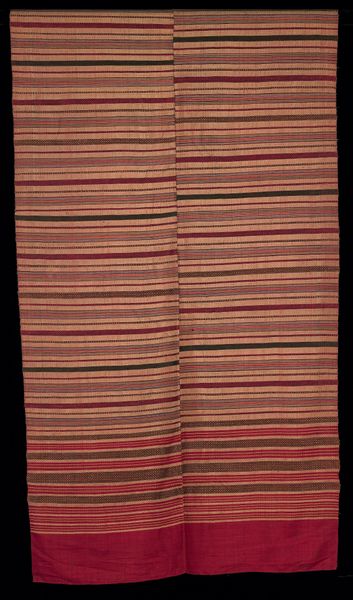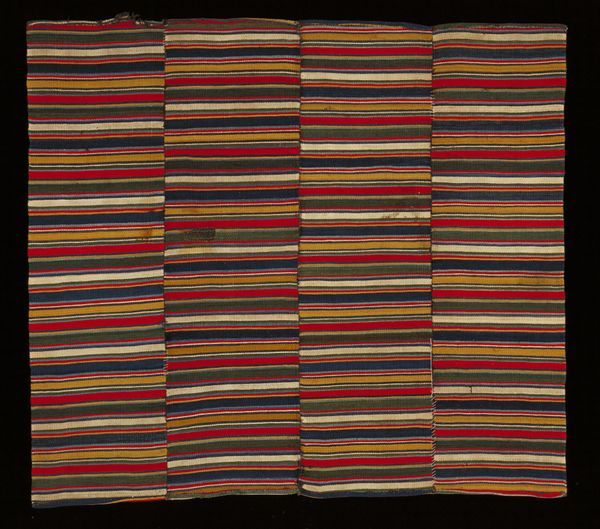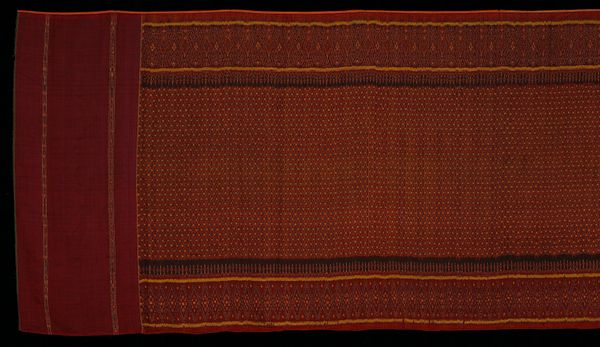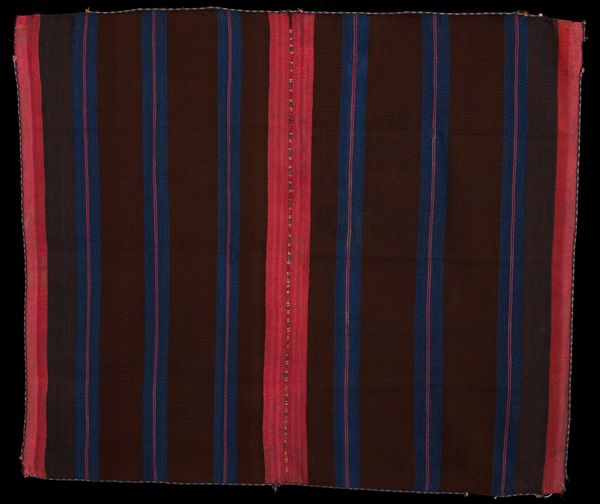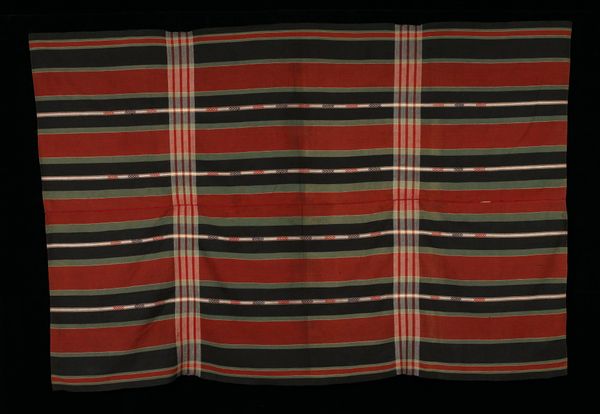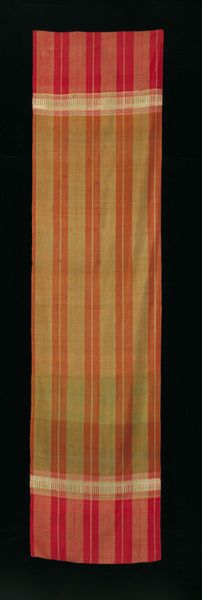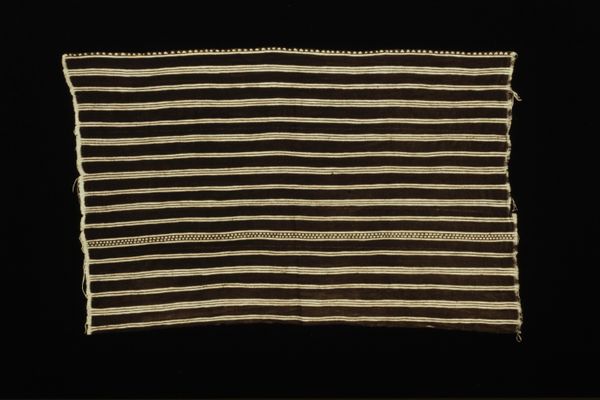
fibre-art, textile
#
fibre-art
#
textile
#
geometric pattern
#
geometric
#
line
Dimensions: 48 1/2 x 27 in. (123.19 x 68.58 cm)
Copyright: Public Domain
Curator: Right now, we're looking at "Pillow," an intriguing textile piece believed to be from the 19th century and part of the Minneapolis Institute of Art's collection. Editor: It has such a simple directness! The earthy sage green and faded persimmon stripes are really working together. It gives me the feeling of being on the Oregon trail. You can just smell the dust, can’t you? Curator: Yes, the simplicity is quite striking, isn’t it? Notice how the repetitive vertical stripes create a sense of rhythm. This formal arrangement—the interplay between line and color—offers a study in visual economy. Think about what such simple geometric designs communicate versus ornate Rococo patterns. Editor: It does bring it back to essentials, doesn’t it? It also evokes handmade objects, things that were crafted out of need, not luxury. I mean, imagine someone meticulously weaving this, hoping to create something functional yet beautiful to bring a little domesticity into a sparse new territory! Did pioneers make similar geometric designs, I wonder? Curator: While the creator remains unknown, the formal elements suggest influences that would require much closer investigation. The pattern suggests structure. Do the warp and weft maintain integrity through their intersection? We can see that the lines dominate. As we analyze its physical existence, it asks important questions about the purpose of geometry, and the social function of textiles more broadly. Editor: Questions, yes, always questions. What dreams have rested here, I wonder? That texture speaks to touch. It’s just rough enough that it wouldn't let you forget that you're alive. You know? I love how a humble object like this can stir up such unexpected reveries and speculation! Curator: Exactly! And understanding the geometry is vital in getting there, because structure impacts how the light falls, the way colors work. And that, in turn, determines that sensory, almost synesthetic experience. It really comes full circle, in that sense. Editor: So true. It’s the interplay, then—between the artist’s rigorous structural intent, and our emotional responsiveness. It really deepens my experience with the piece, looking for both! Thanks for the lesson.
Comments
No comments
Be the first to comment and join the conversation on the ultimate creative platform.
